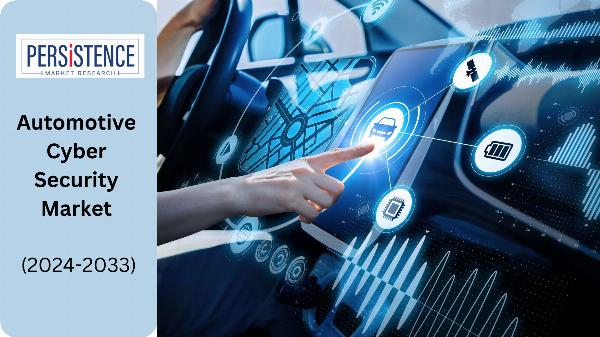 Link Insertions on Real Blogs – Quick Wins for Better Rankings!
Link Insertions on Real Blogs – Quick Wins for Better Rankings!
Inside Servo Drive Technology Innovations Shaping the Future
Written by ganesh » Updated on: June 17th, 2025

As industries increasingly adopt automation and advanced manufacturing techniques, servo drive technology has emerged as a key player in enhancing performance, precision, and efficiency.
Servo drives, which control the operation of servo motors& drives market, are vital for a range of applications, from robotics to CNC machinery. This article delves into the innovations in servo drive technology that are shaping the future of automation, their benefits, and the impact they have across various industries.
Understanding Servo Drives
Servo drives are sophisticated electronic devices that control the position, speed, and torque of servo motors. By using feedback from sensors, these drives adjust motor performance in real time, ensuring precise control over motion. This capability makes servo drives integral to modern automation systems, enabling a high level of accuracy and repeatability.
Key Components of Servo Drives
Controller: The controller processes input signals and determines the required output to the motor based on the desired performance parameters.
Power Stage: This component delivers electrical power to the motor, converting the control signals into the appropriate voltage and current levels.
Feedback Device: Often an encoder or resolver, this device monitors the motor's position and speed, providing real-time data to the controller for precise adjustments.
Communication Interface: Servo drives often include communication protocols (such as EtherCAT, CANopen, or Modbus) to integrate with broader automation systems and enable data exchange.
Innovations in Servo Drive Technology
The servo drive landscape is constantly evolving, with several key innovations paving the way for enhanced performance and capabilities. Here are some of the most notable advancements shaping the future:
1. Advanced Control Algorithms
Modern servo drives are incorporating sophisticated control algorithms, such as Model Predictive Control (MPC) and Adaptive Control. These algorithms enable more precise motion control, allowing servo drives to anticipate and respond to changes in load or speed more effectively. This adaptability leads to smoother operations, reduced wear on components, and improved overall system performance.
2. Integration with IoT
The integration of the Internet of Things (IoT) into servo drive technology is revolutionizing automation. IoT-enabled servo drives can communicate with other devices and systems, providing real-time monitoring and diagnostics. This connectivity allows for predictive maintenance, reducing downtime and maintenance costs while enhancing overall system reliability. Furthermore, data analytics derived from IoT connectivity can inform decision-making and optimize operations.
3. Enhanced Energy Efficiency
Energy efficiency is a critical concern in modern manufacturing. Innovations in servo drives are focused on reducing energy consumption while maintaining performance. Techniques such as regenerative braking, where excess energy generated during deceleration is fed back into the system, are becoming more common. Additionally, energy-efficient designs and smart control strategies can significantly lower energy usage, contributing to sustainability goals.
4. Miniaturization and Integration
As industries demand more compact solutions, the trend toward miniaturization in servo drives is gaining momentum. Smaller drives enable easier integration into tight spaces, making them ideal for applications in robotics and other compact machinery. Furthermore, integrated designs that combine multiple components into a single unit can simplify installation and reduce the overall footprint of automation systems.
5. Safety and Reliability Enhancements
With the increasing complexity of automated systems, safety has become a top priority. New servo drive technologies are incorporating advanced safety features, such as Safe Torque Off (STO) and other functional safety standards. These features ensure that servo motors can be stopped safely in emergencies, protecting both equipment and personnel. Moreover, improved reliability features, such as fault detection and diagnostics, are becoming standard in modern servo drives.
6. User-Friendly Interfaces
The user experience is critical in modern automation technology. Innovations in servo drive design include more intuitive user interfaces, often featuring touchscreens and graphical representations of system performance. These interfaces simplify the configuration and monitoring of servo systems, allowing operators to adjust settings easily and efficiently. Enhanced visualization tools also aid in troubleshooting and diagnostics, further improving operational efficiency.
Applications of Servo Drive Technology
Servo drive innovations are making a significant impact across various industries, with numerous applications benefiting from enhanced performance and precision:
1. Manufacturing and Assembly
In manufacturing, servo drives enable precise control of machinery used in assembly lines. Their ability to perform complex tasks with high accuracy allows for greater productivity and efficiency, minimizing errors and reducing waste.
2. Robotics
Servo drives are critical in robotic applications, where precision and speed are paramount. Innovations in servo drive technology enable robots to perform intricate tasks, such as welding, painting, and material handling, with remarkable accuracy and repeatability.
3. CNC Machining
CNC machines rely heavily on servo drives for accurate cutting, shaping, and finishing of materials. The precision control offered by advanced servo drives enhances the quality of machined parts, leading to improved product quality and reduced rework.
4. Packaging
The packaging industry benefits from the speed and precision of servo drives, which control machinery for filling, sealing, and labeling products. Innovations in servo drive technology enable faster changeovers and adaptability to various product sizes and types, enhancing efficiency in packaging lines.
5. Food and Beverage Processing
In food and beverage processing, servo drives are used for precise control of processes such as bottling, capping, and labeling. The reliability and accuracy of modern servo drives ensure compliance with safety and quality standards, making them essential in this industry.
Future Trends in Servo Drive Technology
As the industry continues to evolve, several trends are expected to shape the future of servo drive technology:
1. Artificial Intelligence (AI) Integration
The integration of AI into servo drive technology will enable smarter control systems capable of self-optimizing performance based on real-time data. AI algorithms can analyze historical performance and make adjustments to improve efficiency and precision continually.
2. Greater Customization
As industries demand tailored solutions, servo drive manufacturers are likely to focus on customization options. This trend will allow businesses to select specific features and configurations that meet their unique operational needs, leading to enhanced performance and flexibility.
3. Sustainable Practices
With increasing awareness of environmental issues, the demand for sustainable manufacturing practices will drive innovations in servo drive technology. This may include the development of eco-friendly materials, energy-efficient designs, and processes that minimize waste and environmental impact.
4. Collaborative Robotics
The rise of collaborative robots (cobots) will influence the design of servo drives. These systems must be safe to operate alongside humans, leading to further innovations in safety features and control systems that enhance reliability and ease of use.
Conclusion
Servo drive technology is at the forefront of automation, enabling precision, efficiency, and adaptability across various industries. Innovations in advanced control algorithms, IoT integration, energy efficiency, and user-friendly interfaces are shaping the future of servo drives, driving performance improvements and enhancing overall system capabilities. As businesses continue to embrace automation, understanding these innovations will be essential for leveraging servo drive technology to gain a competitive advantage in an increasingly complex marketplace.
Note: IndiBlogHub features both user-submitted and editorial content. We do not verify third-party contributions. Read our Disclaimer and Privacy Policyfor details.
Copyright © 2019-2025 IndiBlogHub.com. All rights reserved. Hosted on DigitalOcean for fast, reliable performance.














